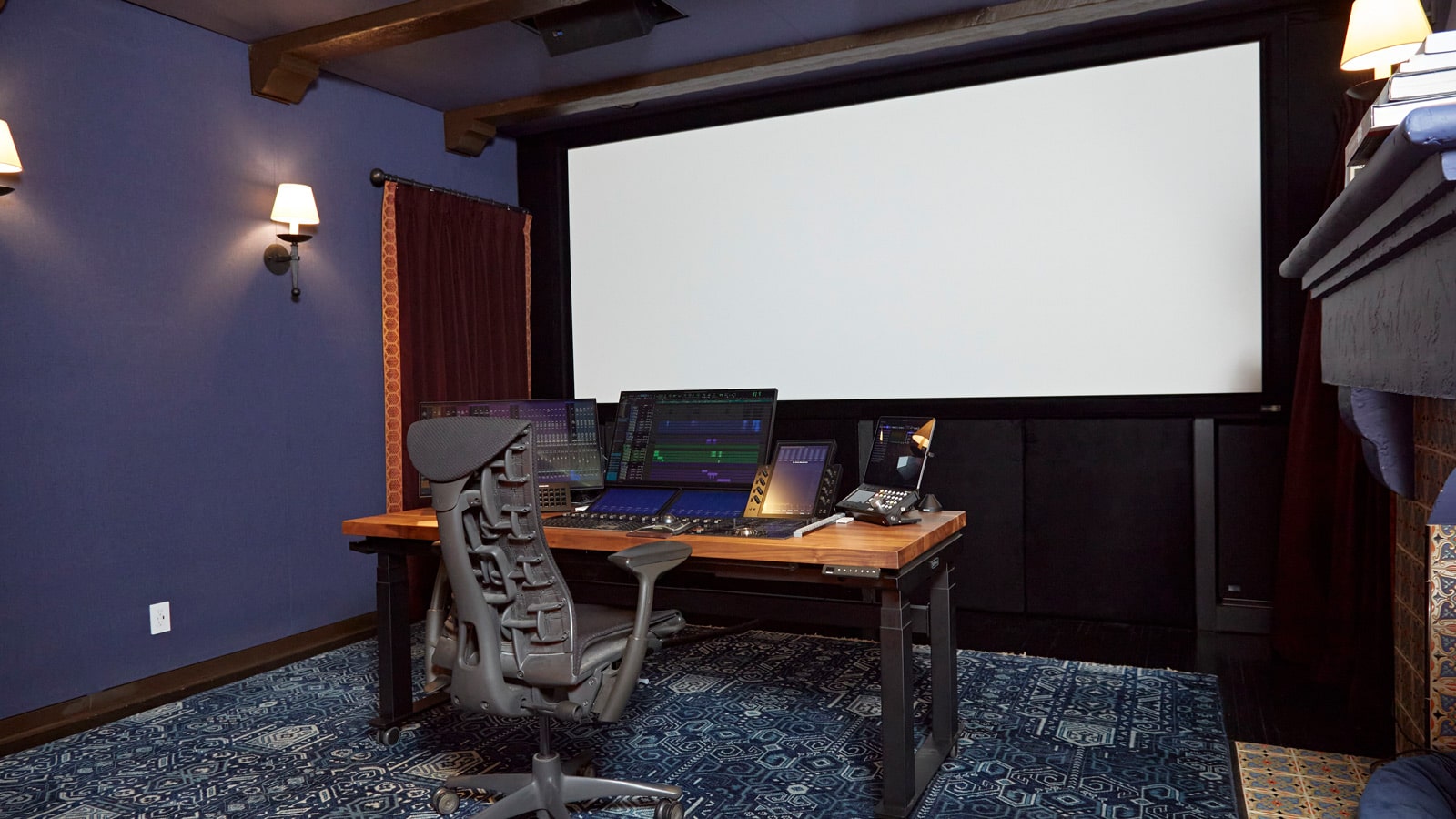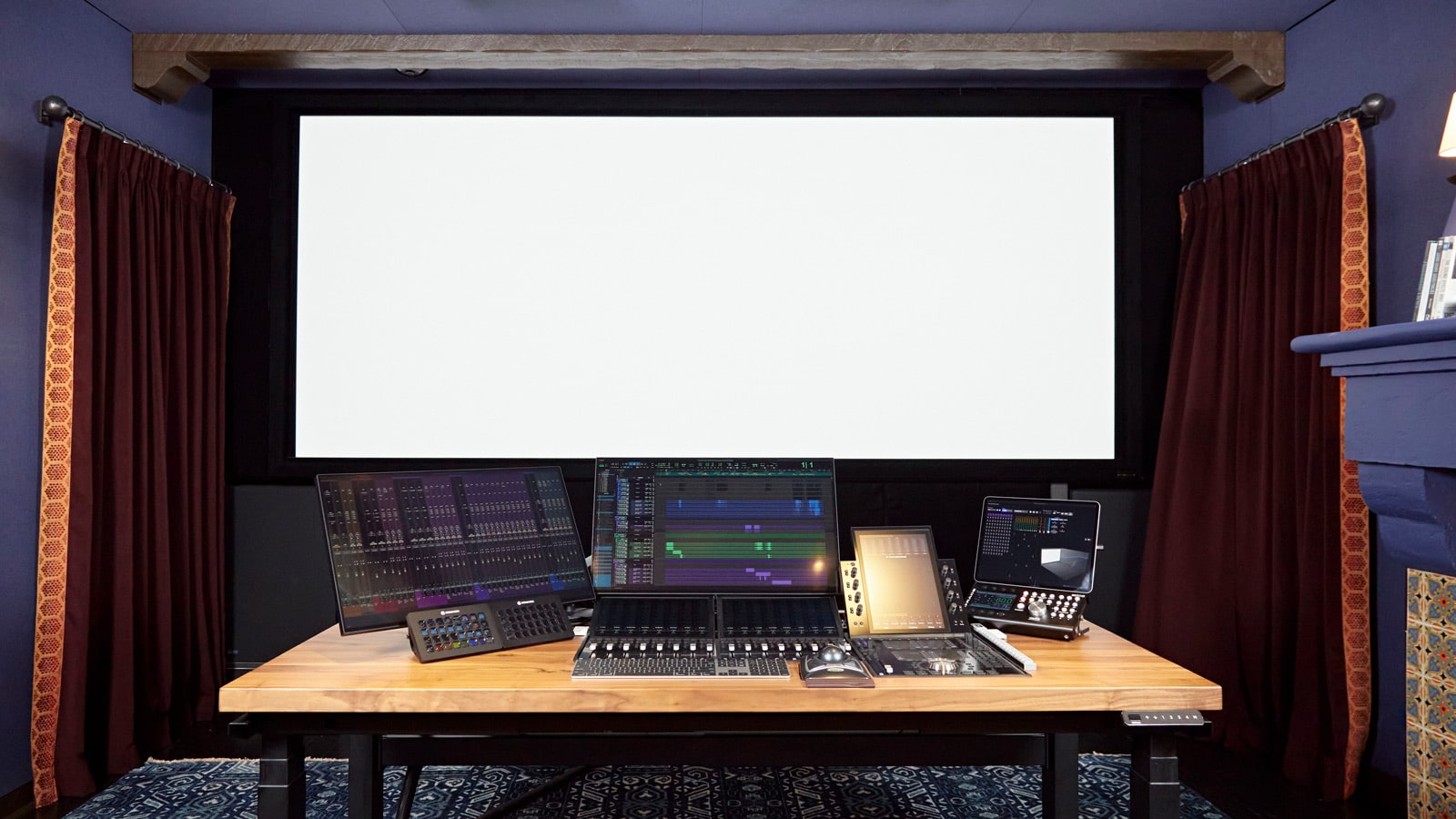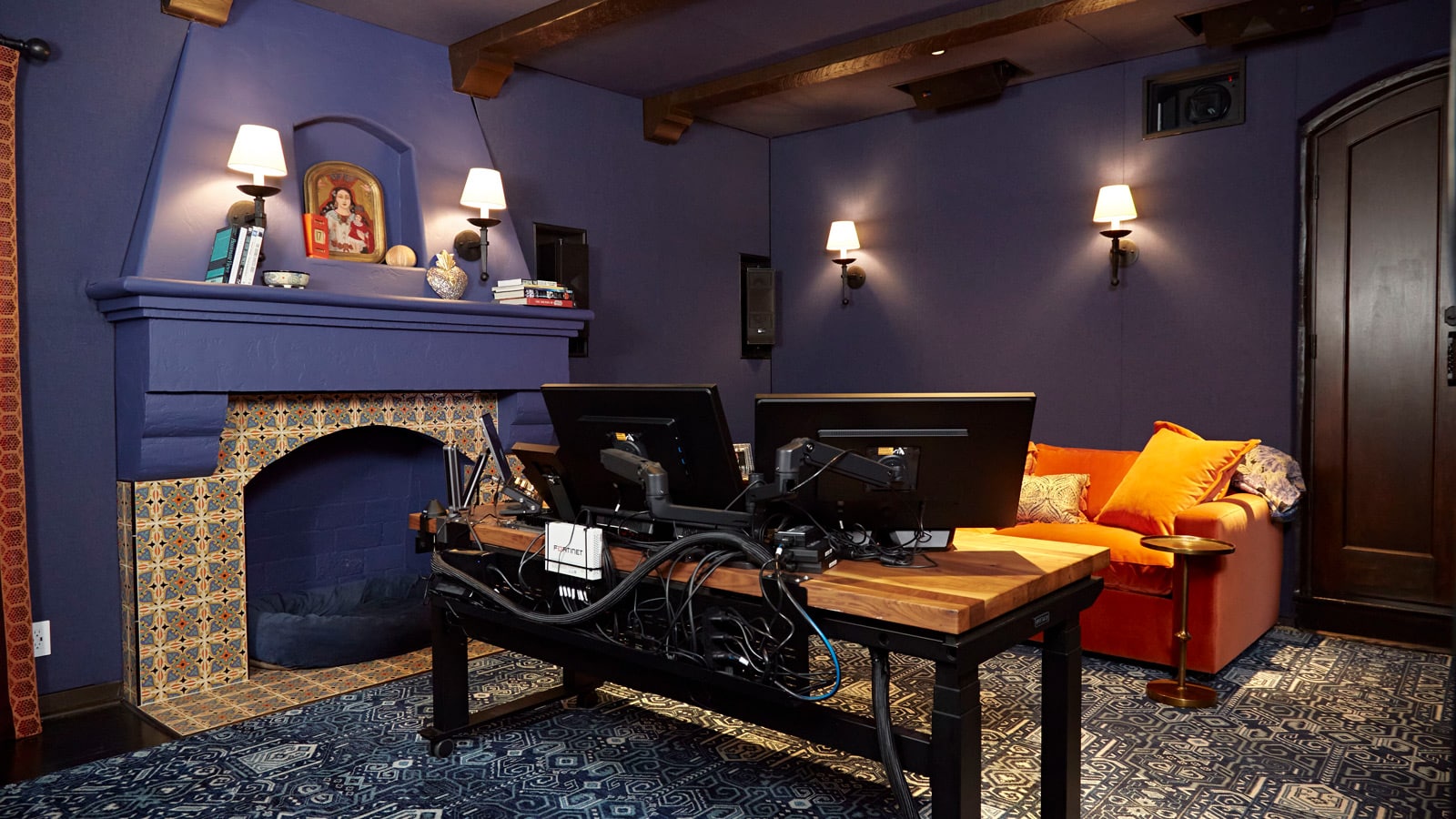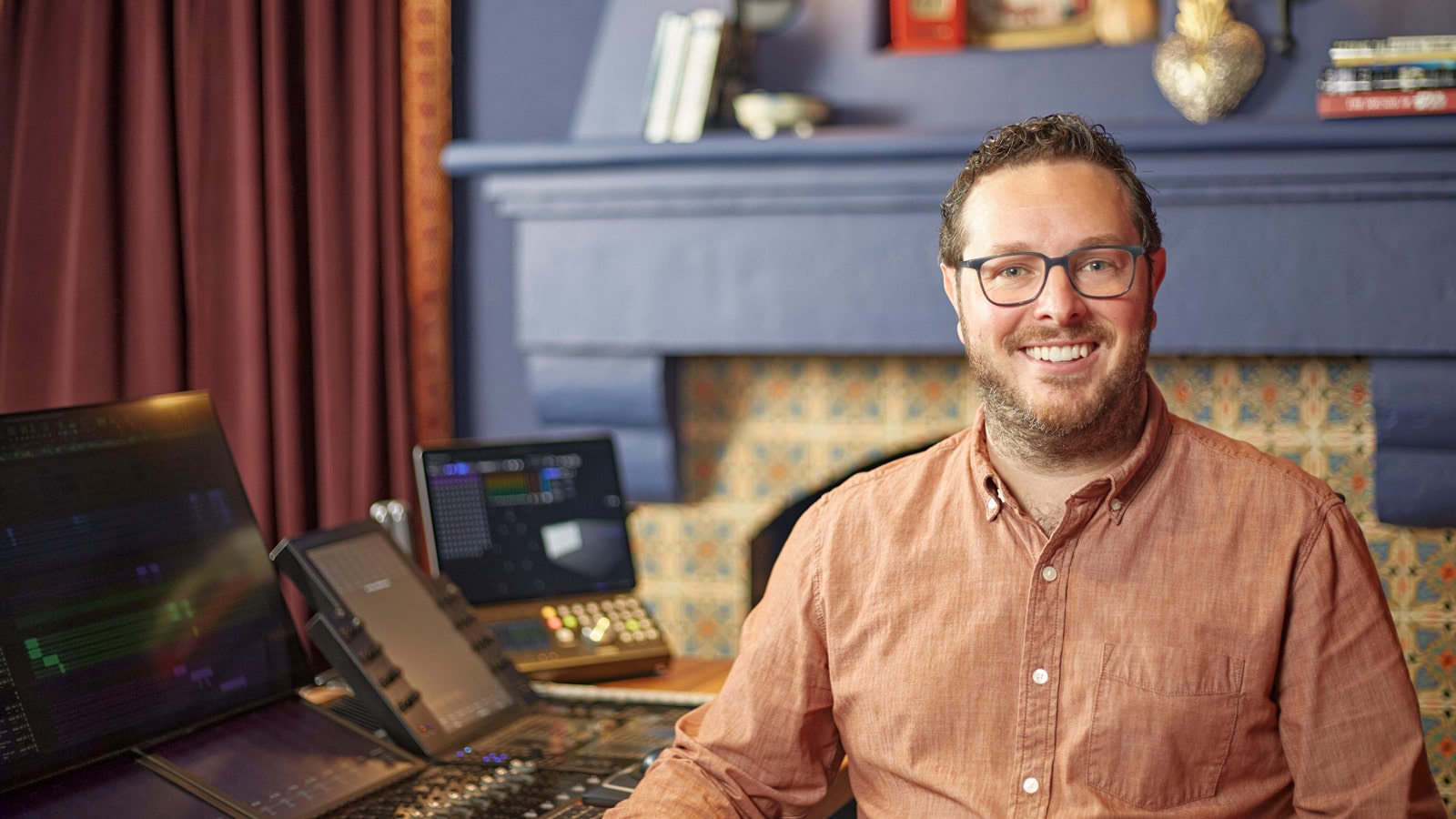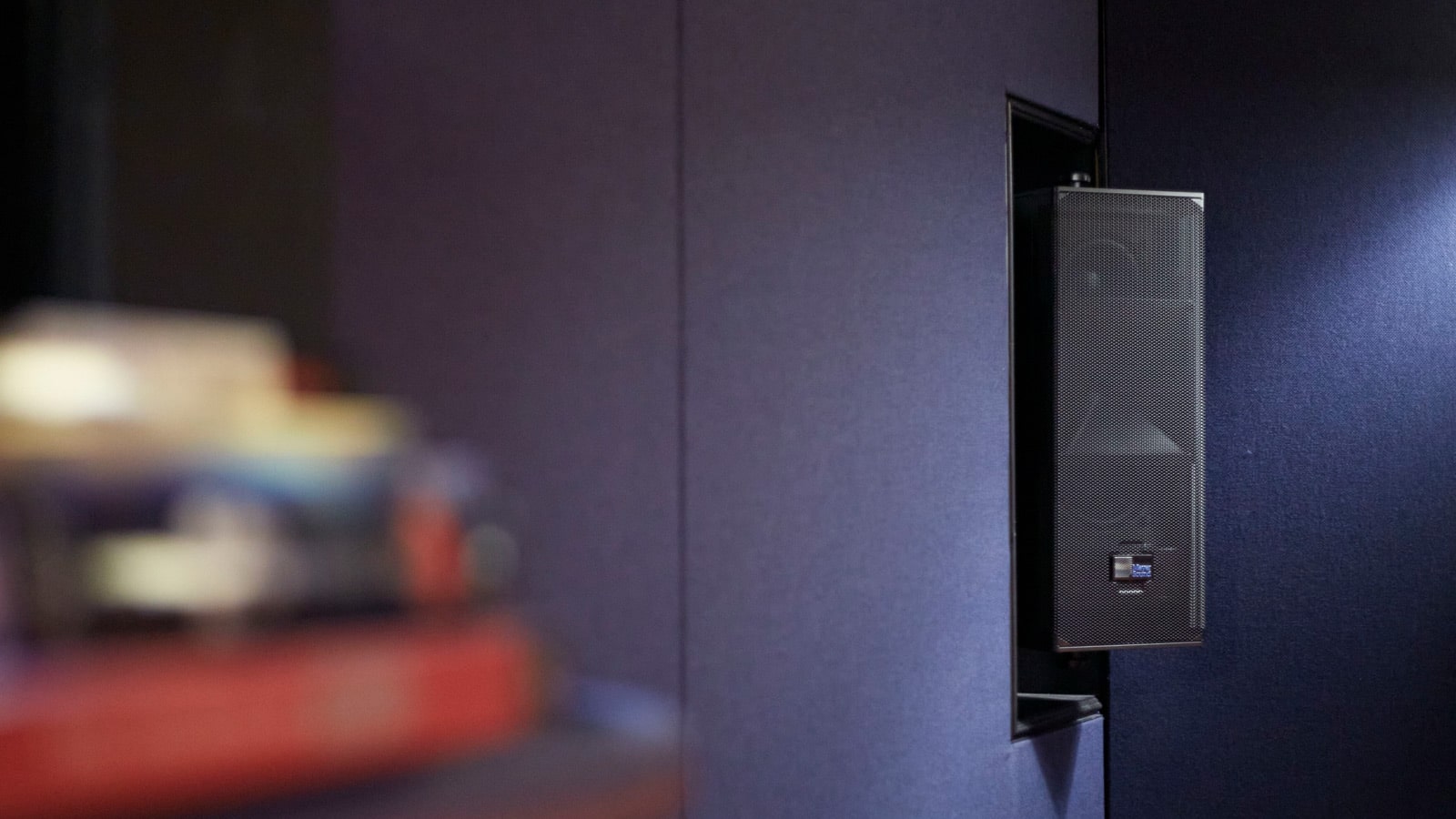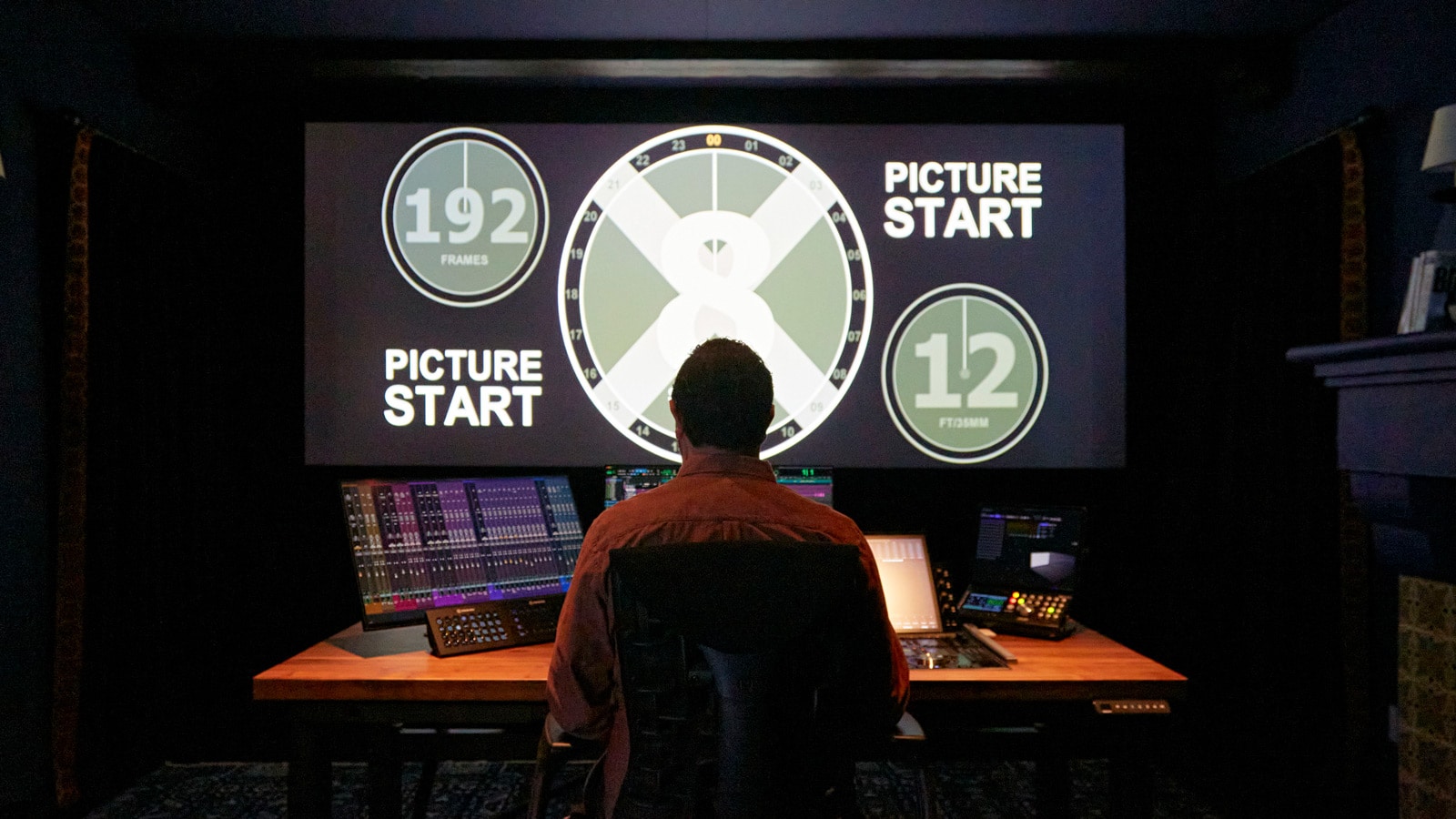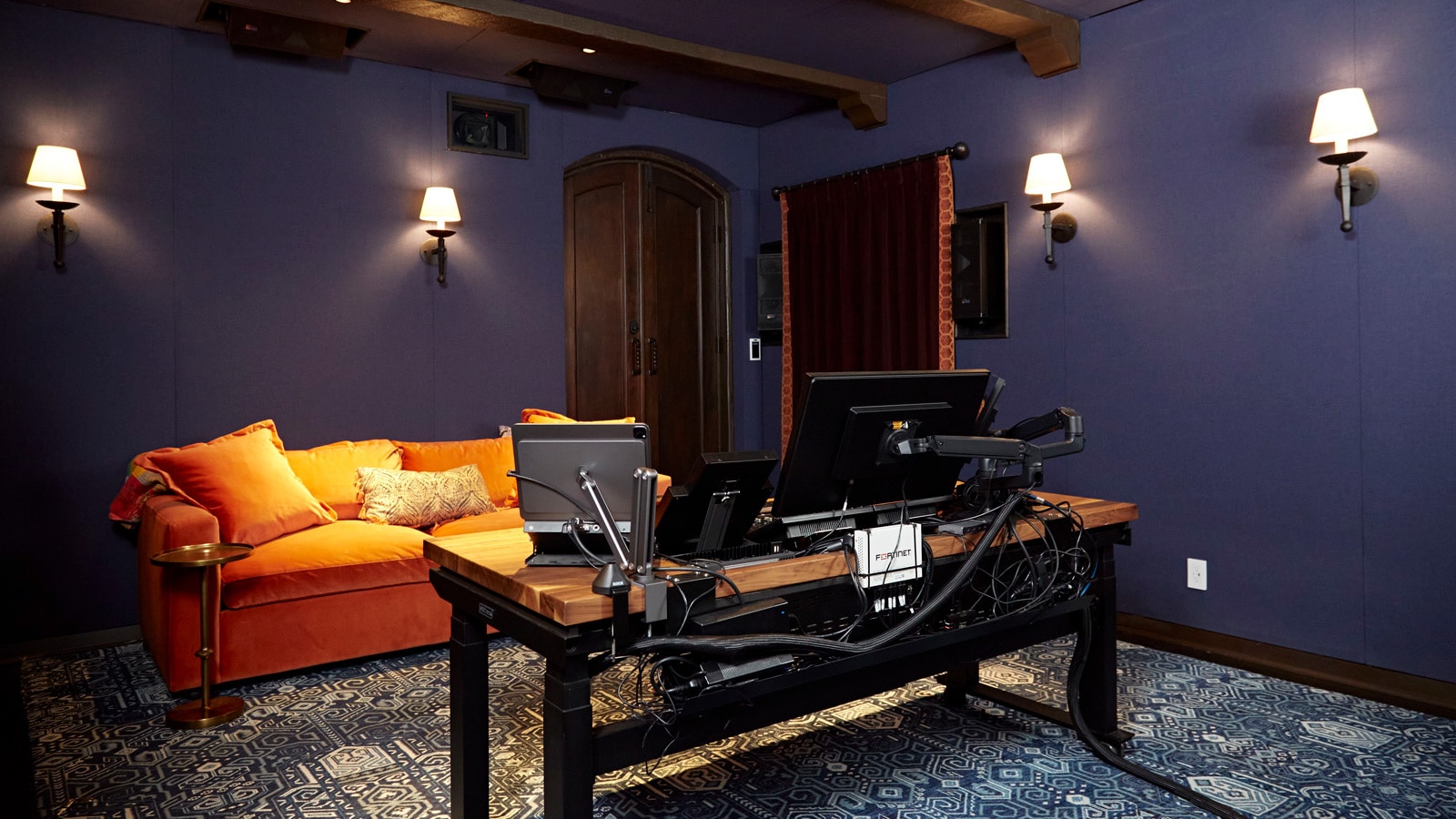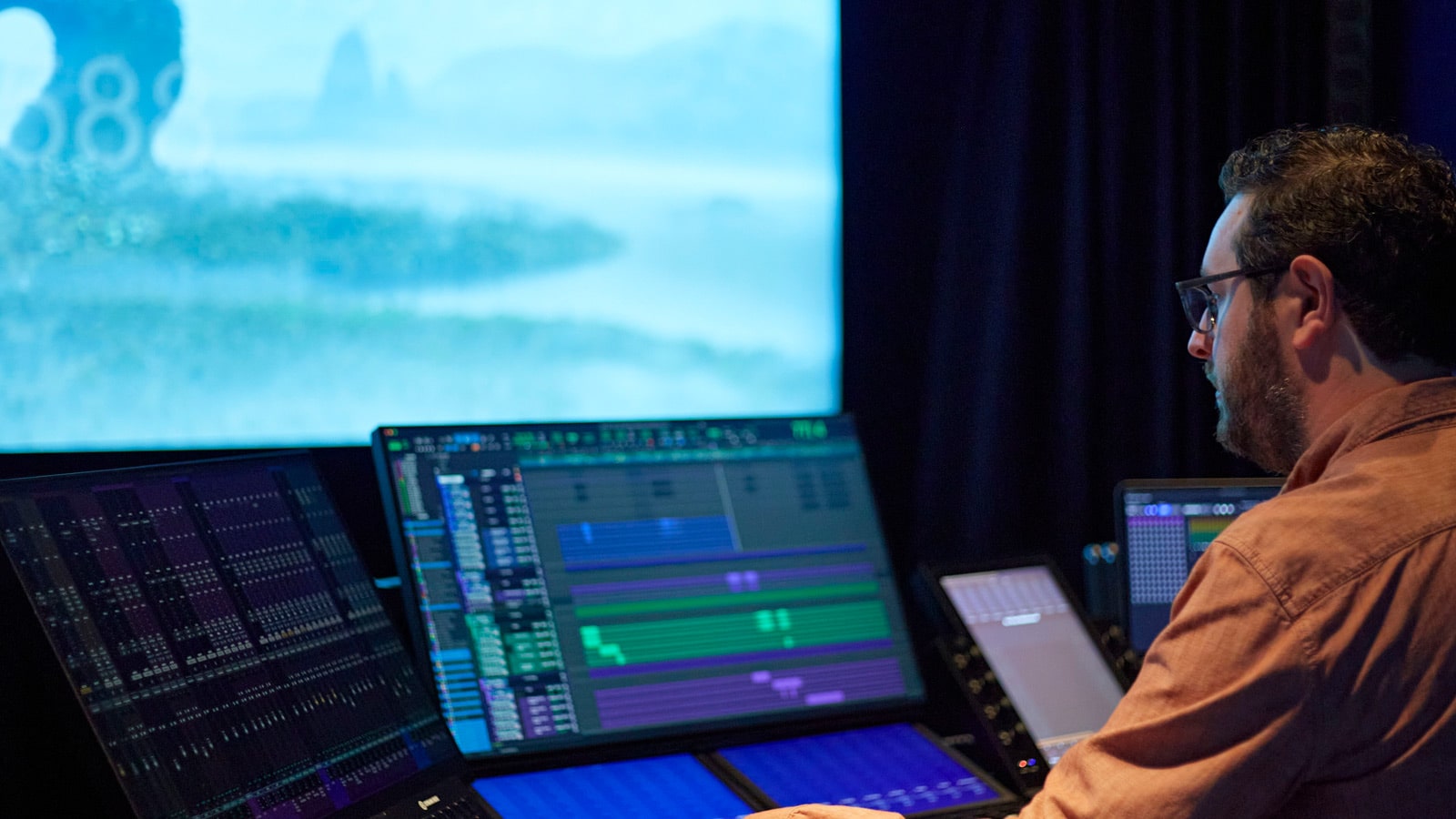Bluehorn is such an integral part of my mixing process. I felt I couldn’t achieve the same caliber of mixes without them. They were my biggest necessary investment.”
John TraunwieserScoring Mixer
After more than a decade of association with some of Hollywood’s most respected film scoring composers and engineers, including a long stint as the in-house engineer for prolific film music composer John Powell, scoring mixer John Traunwieser recently completed a new mixing facility for his exclusive use. Occupying a repurposed room in his home, the new studio is filled with the latest cutting-edge technologies for multi-format surround sound mixing, including a 7.1.4 installation featuring the Meyer Sound Bluehorn System for the front LCR screen loudspeakers.
Traunwieser became intimately familiar with the Bluehorn System during his tenure as an in-house scoring mixer at Powell’s “5 Cat Studio” — the first facility anywhere with a Bluehorn System.
“I soon realized that Bluehorn was an extraordinarily accurate and revealing monitoring system,” Traunwieser says. “They don’t make music sound better than it really is. They are highly analytical, so I could quickly tell which mixes were good and which needed help.”
When it came time to build his own facility, Traunwieser was determined to continue working in the same critical environment. “Bluehorn is such an integral part of my mixing process. I felt I couldn’t achieve the same caliber of mixes without them. They were my biggest necessary investment.”
Externally, the Bluehorn System shares the same cabinet footprint, driver dimensions, and waveguide as the Acheron Designer cinema loudspeaker. However, on the inside Bluehorn has an upgraded HF driver and new, ultra-low distortion amplifiers. Also unique to Bluehorn is a dedicated processor, placed before both the mid-high cabinet and the companion low-frequency cabinet, with system-specific correction algorithms developed by meticulously analyzing all physical and electrical non-linearities throughout the entire system. The result is absolute phase and frequency alignment from 25 Hz to 20 kHz.
According to Traunwieser, the accuracy and neutrality of the Bluehorn System are essential elements in assuring the seamless transition of his mixes into the final dubbing and from there to commercial theaters, home streaming, or both.
“Certainly, with other Meyer Sound systems the translation is perfect,” he says. “But because Bluehorn is a horn-based system, it also emulates the behavior of other horn-based cinema systems very well.”
Complementing the LCR Bluehorn System are two X‑400C cinema subwoofers for LFE and eight ULTRA‑X23 loudspeakers for side, rear, and overhead surrounds. The processing in the Galileo GALAXY 816 Network Platform is programmed for Atmos, theatrical 7.1 and 5.1, near-field (home) 7.1 and 5.1, and stereo. All ULTRA-X23 loudspeakers are configured as Milan AVB endpoints.
“Meyer Sound has always done a great job in keeping a low noise floor with their self-powered systems,” Traunwieser notes, “and with the signal remaining digital to the ULTRA-X23 surrounds I have one less conversion stage, giving me higher fidelity and a lower noise floor. It also simplified the setup, with no legacy XLR connections needed.”
Simplicity was of particular importance to Traunwieser as he served as his own project lead on both design and installation. He brought in an acoustic consultant to ensure a proper baseline acoustic but personally made all equipment choices, supervised construction, and engineered the installations. The new studio occupies a space approximately 20 feet long and 15 feet wide with 10-foot ceilings. The overhead wooden beams and fireplace remain as details of his 1920s-era Spanish-style home.
Traunwieser inaugurated his new facility in the fall of this year, with the first project a documentary requiring a full Atmos mix that will be released direct to streaming. “I’m in conversation on a number of other high-profile projects, some only with code names at this point,” he says. “The timing is perfect as production is ramping up again after a slowdown due to the recent labor disputes.”
At the heart of the studio’s front end is an Avid Matrix paired with a 16-fader Avid S6 console. An RME AVB Tool connects the Matrix to the Galileo GALAXY 816 processor, with the entire system governed by a Brainstorm DXD-16-PTP Grandmaster Clock.
For mixing to video, the studio offers a JVC NZ9 4K laser projector, a Lumagen video processor, and a Screen Excellence acoustically transparent woven screen.
Originally from Australia, Traunwieser has been active in mixing and engineering roles primarily for film scoring since 2010, with dozens of credits as recordist or as principal or assistant scoring mixer. A small sampling of credits includes three films of the Star Wars franchise, The Hunger Games: Mockingjay — Part 2, Jason Bourne, Ferdinand, and the original How to Train Your Dragon plus two sequels.

